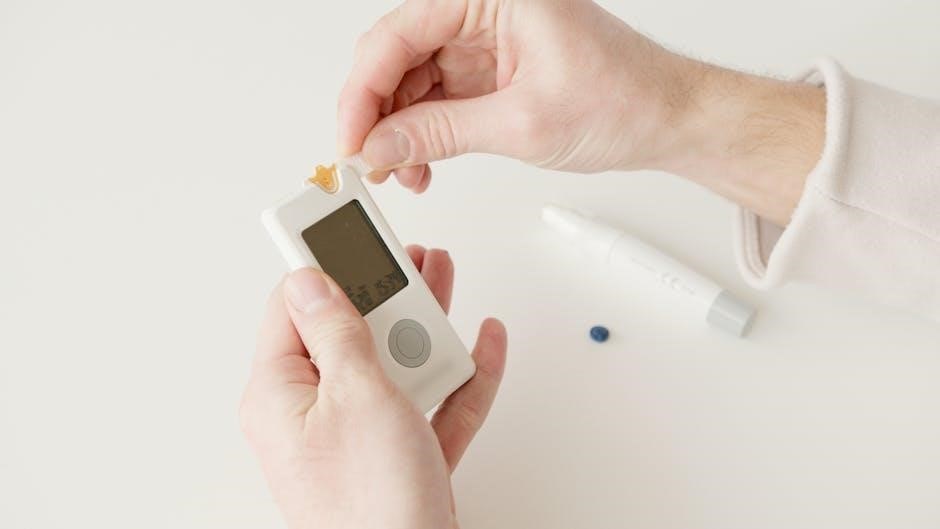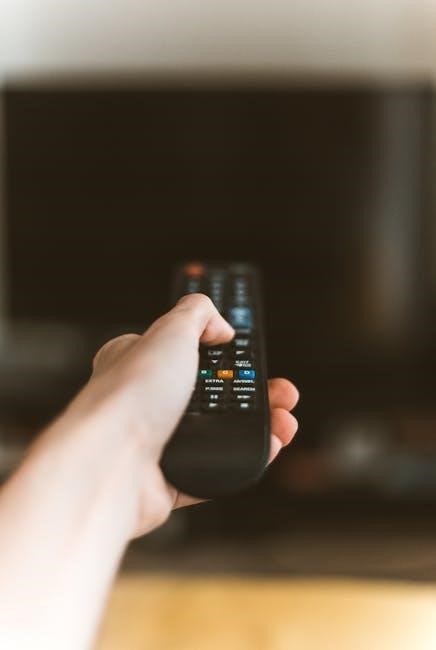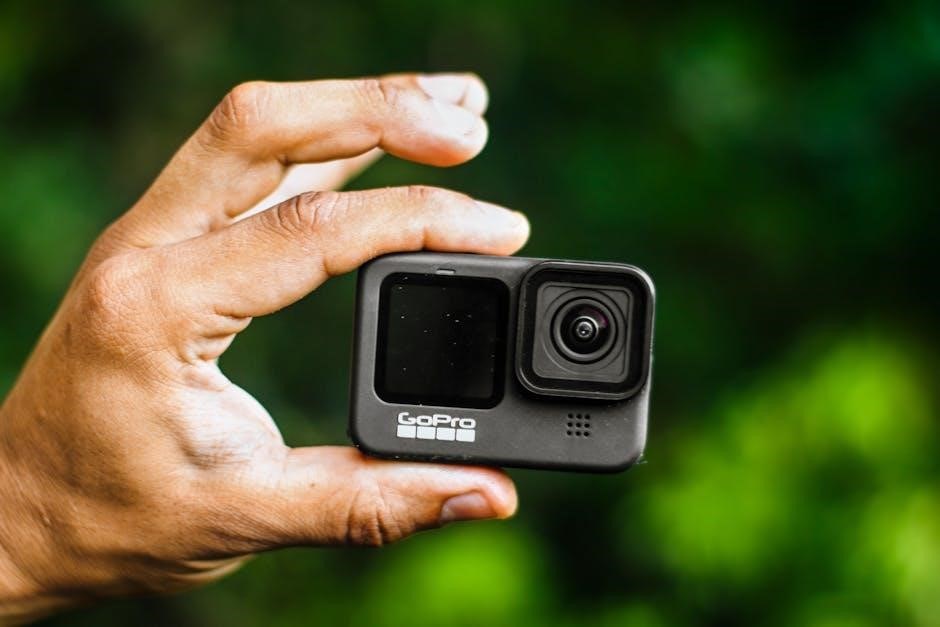Optoma Projector User Manual: A Comprehensive Guide
This comprehensive guide provides users with necessary information about their Optoma projector. From initial setup to advanced settings, this manual ensures a smooth and optimal viewing experience. Safety precautions and troubleshooting tips are included.
Understanding Your Optoma Projector Model
Before diving into the setup and operation, it’s crucial to understand your specific Optoma projector model. Each model boasts unique features, capabilities, and specifications. Begin by identifying the model number, typically found on a sticker on the device itself, the packaging, or the included documentation.
Refer to the model-specific user manual available on Optoma’s website for detailed information. This manual will outline key features such as resolution, brightness, contrast ratio, lamp life, and available input/output ports. Familiarize yourself with these specifications to optimize your viewing experience and understand the projector’s limitations.
Understanding these details will help you choose the right settings and connect the appropriate devices.

Safety Precautions
Prioritize safety by adhering to these precautions. Avoid servicing the projector yourself. Use only Optoma-approved components. Prevent liquids or objects from entering the projector. Ensure proper ventilation to prevent overheating. Following these guidelines ensures safe operation.
Important Safety Instructions
To ensure safe and reliable operation of your Optoma projector, adhere to these crucial safety guidelines. Never attempt to service the projector independently; authorized service providers using Optoma-approved components should handle all repairs. Avoid using the projector or its power supply in wet environments to prevent electric shock.
Always inspect the power supply for damage before use and replace any damaged parts immediately. Ensure adequate ventilation around the projector to prevent overheating by avoiding placement on surfaces like crowded tables or sofas. Do not allow objects or liquids to enter the projector, as this could create a fire or electric shock hazard.
Heed all safety-related markings on the projector enclosure and consult qualified service personnel for repairs. Failure to comply with these instructions could result in personal injury or damage to the projector.

Initial Setup and Installation
Proper setup is crucial. This section guides you through unboxing, positioning, and connecting your Optoma projector. Follow the step-by-step instructions for a hassle-free installation and optimal viewing experience from the start.
Connecting Devices: HDMI, VGA, and Other Inputs
Connecting external devices to your Optoma projector is straightforward. Use HDMI for high-definition video and audio from Blu-ray players, gaming consoles, or streaming devices. VGA inputs are available for older devices like computers. Ensure the projector and connected device are powered off before making connections.
Select the correct input source on your projector using the remote or on-device controls. Some models also offer USB ports for media playback or connecting external storage. Check the user manual for specific port locations and supported formats. Securely attach all cables to prevent signal loss or damage.
For audio, utilize the projector’s built-in speakers or connect external speakers via the audio output. Adjust the volume settings to your preference. By following these steps, you’ll be able to connect various devices and enjoy your projector’s capabilities fully.
Image Settings and Adjustments
Optimize your viewing experience with precise image settings. Adjust brightness, contrast, and color for vibrant visuals. Use keystone correction to eliminate distortion, and fine-tune focus for sharp, clear images on any surface.
Focus, Zoom, and Keystone Correction
Achieving a perfectly aligned and focused image is crucial for an optimal viewing experience. Your Optoma projector offers several tools to help you accomplish this. The focus adjustment allows you to sharpen the image, ensuring clarity and detail. Use the focus ring or electronic focus feature, depending on your model, until the picture is crisp and clear.
Zoom functionality lets you adjust the image size without physically moving the projector. This is especially useful in rooms with limited space. Keystone correction compensates for distortion that occurs when the projector is not perpendicular to the screen. Utilize the vertical and horizontal keystone settings in the projector’s menu to square off the image, creating a rectangular display. These adjustments ensure that your projection is perfectly aligned, focused, and visually appealing, regardless of the room’s layout or projector placement.

Troubleshooting Common Issues
Encountering issues with your Optoma projector? This section provides guidance on diagnosing and resolving common problems. From image distortions to connectivity failures, find solutions to keep your projector running smoothly.
Lamp Replacement and Maintenance
Proper lamp maintenance is crucial for extending the life of your Optoma projector. When the lamp reaches its end of life, a replacement is necessary. Follow these steps carefully to ensure safe and correct installation.
Safety First: Always disconnect the projector from the power outlet before beginning any maintenance. Allow the projector to cool down completely, as the lamp can get extremely hot.
Accessing the Lamp Compartment: Locate the lamp compartment door, usually on the side or bottom of the projector. Use a screwdriver to remove the screws securing the door.
Removing the Old Lamp: Gently pull out the old lamp module by its handle. Be careful not to touch the glass part of the lamp.
Installing the New Lamp: Insert the new lamp module into the compartment, ensuring it is securely in place. Tighten the screws to secure the lamp door.
Resetting the Lamp Timer: After replacing the lamp, you must reset the lamp timer in the projector’s menu. Refer to your user manual for specific instructions.
Regular cleaning of the air filters is also essential to prevent overheating and maintain optimal performance.
Advanced Features and Settings
Explore your Optoma projector’s full potential with advanced features. Fine-tune image settings, explore 3D capabilities (if supported), and customize display options for an enhanced viewing experience tailored to your preferences.
3D Settings (if applicable)
If your Optoma projector supports 3D, delve into the settings for an immersive viewing experience. Navigate the menu to enable 3D mode, selecting the appropriate format based on your content source, ensuring compatibility with your 3D glasses. Adjust the 3D depth to personalize the level of immersion, optimizing the image for comfortable viewing. Explore options such as frame packing, side-by-side, or top-and-bottom formats.
Properly configuring these settings is crucial for achieving the desired 3D effect, enhancing the depth and realism of compatible movies, games, and other content. Consult the specific documentation for your Optoma projector model for detailed instructions and troubleshooting tips related to 3D functionality.
Connectivity and Network Options
Explore the diverse connectivity options available on your Optoma projector, enabling seamless integration with various devices and networks. Utilize HDMI ports for high-definition video and audio input from sources like Blu-ray players, gaming consoles, and streaming devices. VGA ports offer compatibility with older devices, while USB ports facilitate media playback or firmware updates.
For network connectivity, check for Ethernet ports or built-in Wi-Fi, allowing you to control the projector remotely, access online content, or integrate it into a smart home system. Consult your projector’s manual for specific instructions on configuring network settings, ensuring a stable and reliable connection for enhanced functionality and control.

Warranty and Support Information
Your Optoma projector comes with a limited warranty, safeguarding against manufacturing defects and malfunctions. Refer to the warranty card or the Optoma website for detailed terms and conditions, including the duration of coverage and what is specifically covered. Keep your purchase receipt as proof of ownership for warranty claims.
Optoma provides comprehensive support resources to assist you with any issues or inquiries. Visit their website for FAQs, troubleshooting guides, and software downloads. You can also contact their customer support team via phone or email for personalized assistance. Before contacting support, gather your projector model number and serial number for faster service;
